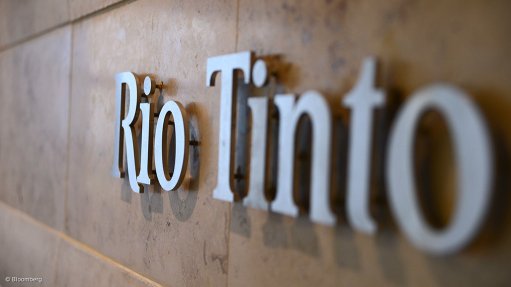
Photo by: Bloomberg
PERTH (miningweekly.com) – Mining giant Rio Tinto has again set a new production benchmark at its iron-ore operations in the Pilbara, as it ramped up towards capacity of 290-million tonnes a year.
“Rio Tinto has started the year with a series of performance records as we continue to drive productivity gains across our operations,” said CEO Sam Walsh on Tuesday.
“Our Pilbara iron-ore business has again set new benchmarks for production, shipments and rail volumes for the first quarter, and we are well on track to reach nameplate capacity of 290-million tonnes a year by the first half of 2014.”
During the three months ended March, Rio’s iron-ore production increased to 66.4-million tonnes, up 8% on the previous corresponding period. This was a record first-quarter production for the company.
Iron-ore shipments for the period was also up by 16% on the previous corresponding period to 66.7-million tonnes.
However, first-quarter iron-ore production was below fourth-quarter levels, owing to disruption caused by seasonal weather patterns. Tropical cyclone Christine closed Rio’s Pilbara ports and coastal rail operations in late December. Heavy rainfall associated with the cyclone and other adverse weather conditions in January and February impacted across mine, rail and port operations.
Meanwhile, mined copper increased by 17% on the previous quarter, to 156 500 t, with the Kennecott Utah operation, in the US, delivering a 44% increase in production on the back of higher grades at the mine and improved recoveries at the concentrator.
“Our mined copper production benefitted from higher ore grades at Kennecott Utah Copper and production ramp-up at Oyu Tolgoi,” Walsh said.
The Oyu Tolgoi mine, in Mongolia, produced 25 300 t of copper and 65 500 oz of gold in the first quarter of the year, with the higher grades being offset by lower throughput owing to post-commissioning issues that required the shutdown of one grinding circuit.
Full production at Oyu Tolgoi restarted in March.
Rio also reported on Tuesday that coal production for the three months to March improved, compared with the previous corresponding period, owing to a productivity improvement programme.
Hard coking coal production was up 14% on the previous corresponding period, to 1.9-million tonnes, while semi-soft and thermal coal production was up by 12%, to 6.8-million tonnes.
Bauxite production and shipments also reached record highs during the quarter under review, driven by a ramp-up in production at the Weipa mine, in South Australia, to feed the newly expanded Yarwun alumina refinery.
Bauxite production for the quarter increased to more than 10-million tonnes, while alumina production increased by 17% on the previous corresponding period to 1.8-million tonnes.